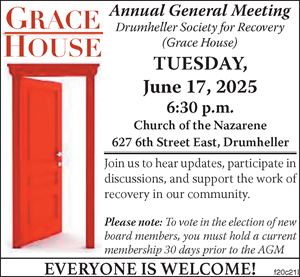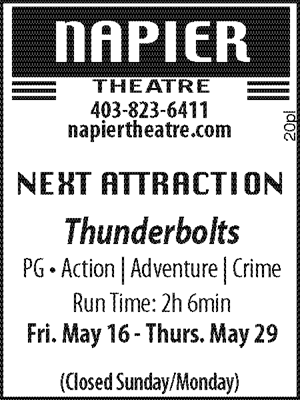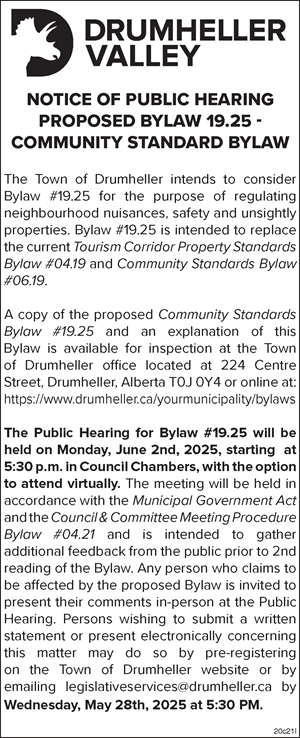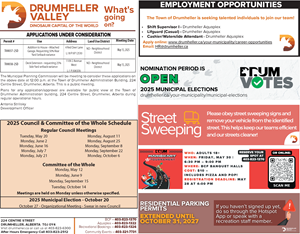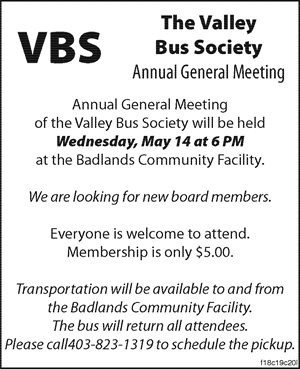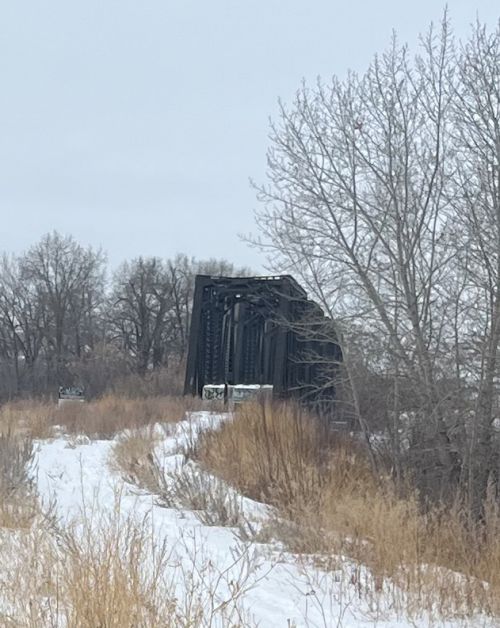
The seven bridges which are part of the Drumheller Rails to Trails project, including six along the trail to Wayne and Kohut Crossing--formerly the Midland Bridge, will need to undergo thorough inspections by Alberta Transportation before they can be converted into pedestrian and active transportation crossings.
Drumheller Chief Administrative Officer (CAO) Darryl Drohomerski explained during the regular Monday, March 6 council meeting it was recently discovered some additional steps would need to be taken, including receiving a Bridge File Number from Alberta Transportation.
“The bridges we have taken over were originally owned and operated as private use bridges by CN Rail. In Canada, the railway companies are federally regulated and do not come under provincial, in this case Alberta Transportation, regulations or authority, and as such they did not have provincial bridge identifiers,” explains director of Infrastructure Services Dave Brett.
Mr. Brett notes, as the Town has now taken over these bridges for public, pedestrian use, these structures will now fall under provincial regulations and will require a bridge identifier from the province.
Part of the process will include an in-depth physical inspection of the bridge by Alberta Transportation, which is weather dependent. Wayne Wood of Alberta Transportation says this process has two parts to it.
The first will document the geolocation, type, and configuration of each bridge; this includes entering data “detailing the components that make up the bridge” as inventory.
During the second part of the process, a detailed visual inspection will be conducted, with photos and detailed descriptions logged of the various bridge elements and their condition. Mr. Wood notes the inventory taken for each specific bridge must be entered before the inspection can be entered into the system, which can take some time.
“Typically, bridge inspections look for deficiencies in the bridge condition and identify items that need repairs or upgrading to ensure the safety of the bridge and to maximize the life of the bridge,” Mr. Wood tells the Mail.
As these bridges were previously used for “heavy rail traffic” and will be converted to use by pedestrians and active transportation, such as bicycles, Mr. Brett does not anticipate there will be any significant issues found during the inspections, though he notes these bridges have been idle for many years and there could be some surprises.
Along with the physical inspections, the Town will also need to review records.
Mr. Brett shares the Town recently received some bridge drawings from CN Rail, which will be a significant help. Without these drawings, the Town would have been required to create its own drawings.
This has resulted in some considerable savings on both time and resources, and the Town is working with “experienced bridge inspectors” to help further streamline the process as much as possible.
Mr. Brett says this process has already begun on the Midland Bridge, with a timeline in development for the bridges to Wayne. The Town is aiming to have the Rails to Trails network usable by the community as quickly as possible, but at this time there is no specific timeline on completion.










